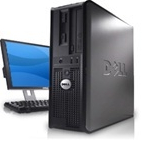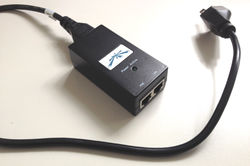|
|
Best configuration
|
Alternative
|
Poor (avoid)
|
Remote access
|
|
Base Station location
|
In Safety Managers office within visible range of the parking so a visual reference of vehicles present can be compared to the Transfer Activities viewer - helpful when identifying installed cameras that have not assigned to a vehicle in the software
|
In a server room with no visual reference to the parking lot; but on site so a reference can be made to the parking area (windows, or quick walk to a door)
|
Same as Alternate but no quick access to windows or doors to visually reference the parking area. If un-avoidable perhaps a client parking area camera system might be considered offering a visual reference
|
See bottom section
Remote Viewing
|
|
PoE Location (Power Over Ethernet, adapter/injector)
|
- The PoE should be located indoors or in a weather proof location within 35' of the Access Point and plugged into a grounded 120/230VAC electrical outlet. Always utilize the 35' supplied foil wrapped Cat5e grounded cable.
- If the PoE is located near the Base Station this would allow both the Station and the PoE to be plugged into a backup UPS to maintain power to both during power outages.
- Always keep the PoE as close to the AP as possible
- Always limit combined external and internal cat5 cable runs to under 275' max
|
- If the AP will be located further away from the Base Station, always keep the PoE as close to the AP as possible with in distance that the 35' supplied foil wrapped Cat5e grounded cable will permit, then run a standard Ethernet cable up to 275' back to the Base Station
- An alternative max 100' supplied foil wrapped Cat5e grounded cable will permit longer distance from the AP to the PoE when 35' is not sufficient to ingress a building or weather proof area (requires special pricing quote)
|
- Avoid longer cable runs of combined external and internal Cat5 cable in excess of 275'
- If the AP is located more than 250' from the Base Station then you can amplify the Ethernet signals with a 5 port dumb Ethernet Switch located indoors to extend the internal cat 5 cabling to a max distance of an additional 275' after the Ethernet Switch to the Base Station
- A PoE Ethernet Switch having PoE built in might not share the grounding feature, and a lightning strike or power surge could take out the PoE section causing all APs to go down. (individual PoEs are less likely to get simultaneously taken out from a surge)
|
- PoEs must be directly connected to the APs via the shielded foil wrapped Cat5e supplied cables (having the metal ends connected to the ground drain wire on both ends). It is best to use a separate supplied PoE per AP
See bottom section
Remote Access Points
|
|
Access Point location(s)
|
- APs should be mounted no more than 12-15' from the ground and at least 1' standoff from the side of a building
- AP must be in direct line of sight of the front windshields of the parked vehicles
- Within max 250' to vehicle windshields
- Best when all vehicles face the AP
|
- APs can be placed indoors in a central parking area - AP can be hung upside down to accommodate indoor ceiling mounting, but this may affect WiFi radiated pattern and signal sensitivity - try several locations before permanently mounting
|
- Avoid parallel or angled or Backward parking to the AP direct line of site to front windshield recommended
- Avoid indoor mounting when electrical wiring and HID indoor lighting fixtures can interfere with WiFi signal
- Avoid mounting outdoors on a roof as reflective flat surfaces may cause irregular WiFi patterns and interfere with signal - also sides of roof may block line of site to vehicles parked closer below the building sides
- Avoid tower mounting close to other WiFi or electrical sources
- Avoid mounting over 15' from ground - higher IS NOT better
- IN RARE SITUATIONS, Client APs can be used in place of an Idrive AP, but special programming MUST be performed on each CAMERA MANUALLY and will increase the cost of the Cameras sale price. This is a Special Quote basis only!
|
See bottom section
Remote Access Points
|
|
Multiple Access Points
|
- Multiple APs can be used by connecting all Ethernet Cables after the PoE to a 5 Port dumb Ethernet Switch (without central PoE)
|
- Directional Access Points are available for quote only when it is determined that Omni-directional has too much interference from neighboring WiFi networks or for when multiple APs are needed to cover a specific area
- Directional APs help to block out sides and back of AP and focus transmitting and receiving energy on a smaller 65 degree forward pattern
|
Avoid over saturation of multiple APs - if parking times are staggered (meaning vehicles come in a varying times) - If Vehicles change shifts as same times and all come in at once, then use multiple APs
|
See bottom section
Remote Access Points
|
|
Remote Access Points
B-B = Wireless Bridge to remote bldg
A1 and A2 = Directional APs across WiFi Bridge
C = Main Bldg Directional AP
C1 = Omni-Directional AP
|
When client parking (and AP location) is not directly accessible via client Ethernet cable or parking is separated by distance and not accessible via client Ethernet wired back to the Base Station, then a client installed WiFi Bridge solution is acceptable
- In this situation Idrive can program and configure the WiFi bridge equipment to operate in conjunction with the programmed APs so there is no conflict. Idrive supplied WiFi bridges are then supported and maintained by Idrive Support
- Client supplied WiFi bridges are acceptable, but will not be maintained by Idrive Support and must be programmed to the 192.168.0.0/16 network segment using the IP addresses that Idrive Support supplies so there is no IP conflict
|
Client VPNs can be used (although not supported by Idrive) - See last column Remote Access
|
Avoid WiFi bridges that are on the 2.4GHz bandwidth - 5.8GHz is preferred as the network is less saturated
|
- Remote Access Points can be placed in a client location hundreds of miles away as long as the client maintains a VPN with a VLAN of 192.168.0.0/16 separate for the Idrive Cameras to communicate back to the Base Station.
- Client is responsible for the LAN integrity and is not supported by Idrive Support
- A better solution to remote Access Points is a Download Point Micro Base Station and AP at the remote location only requiring an internet connection (events and data will transfer back to the main Base Station as if they downloaded there originally (usually within a 30 minute period after downloading at the Micro)
|
|
Remote - Viewing
|
- Idrive Terminal allows the software to be accessed by multiple Client users performing event viewing and software edits simultaneously across the Client LAN
- Idrive Terminal is Licensed for annual use on client PCs.
|
- Team Viewer (Client LIC version) can be used to remotely log into machine over IP from any PC to Idrive Base Station
|
Microsoft RDP Remote Desktop Protocol - runs heavy and makes video and audio out of sync and choppy - Only one user can connect at a time - requires heavy PC resources and LAN bandwidth usage
|
If Base Station is in a locked equip room, or located far away from parking area, or in a poorly located room consider the product Idrive Terminal to connect over the client LAN from another client PC allowing better proximity to the parking area for the Control Center operator - Idrive Terminal operates light weight because all events are transferred to client PC to play rather than LAN streaming video and data
|






